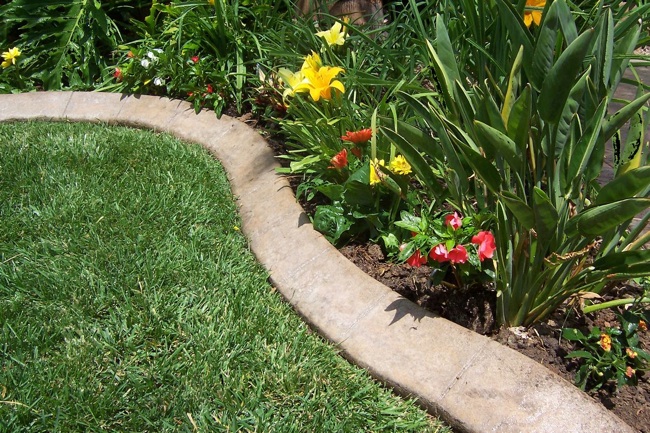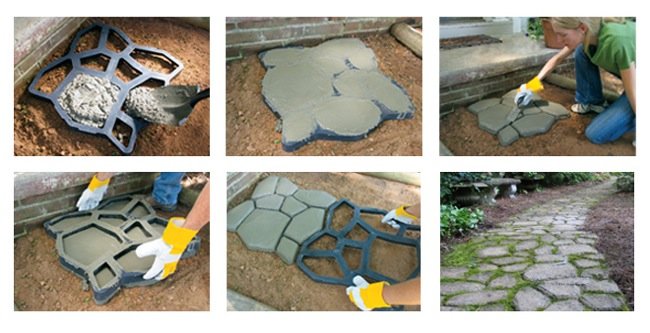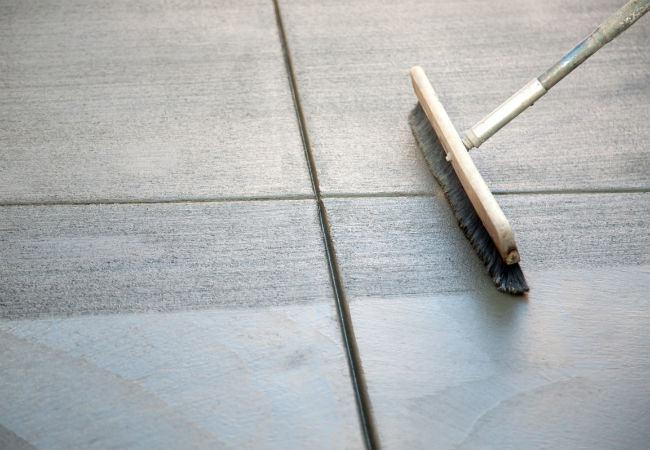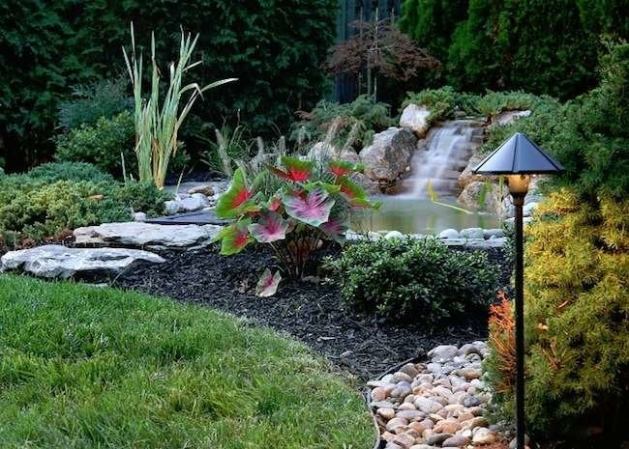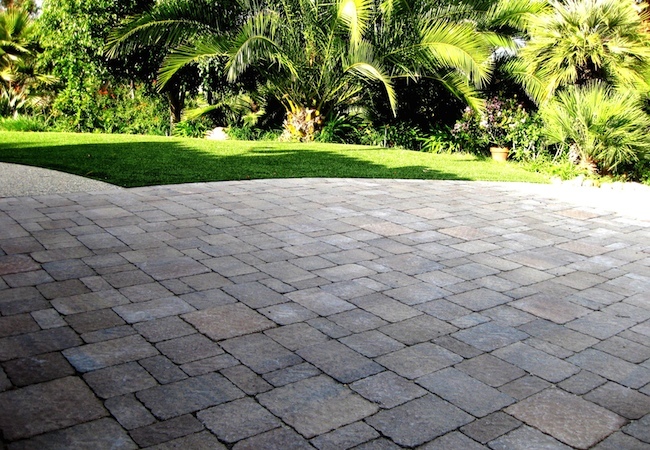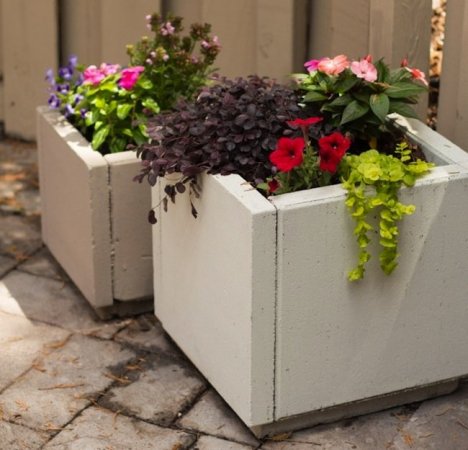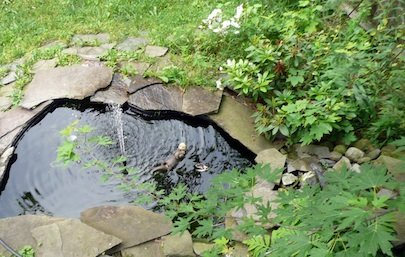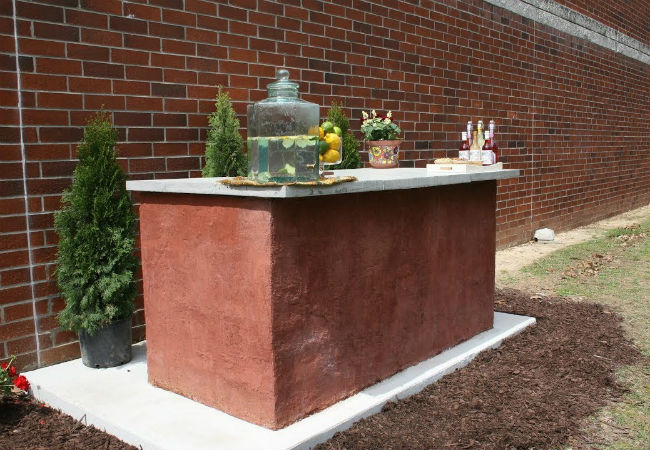We may earn revenue from the products available on this page and participate in affiliate programs. Learn More ›
Always affordable and at once both decorative and functional, concrete garden edging effectively defines garden beds, tree surrounds, and driveway curbs, their versatility enabling you to match any landscape contour.
Perhaps most appealing of all is that concrete garden edging lasts for years and years. Once you’ve completed this project, you can forget all about it and rest assured of its durability.
Even though the quantity of requisite materials will vary in keeping with the ambitiousness of your vision, you can use the steps below to make concrete garden edging in whatever length you wish.
Tools & Materials
Bobvila.com may earn a commission from purchases made through these links.
- Saw
- Hammer
- Plywood
- Wood stakes
- 1" wood screws
- Drill
- Wood float
- Mixing hoe
- Shovel
- Margin trowel
- Edging tool
- Mixing tub
- Quikrete concrete mix
- Liquid cement color
- Acrylic concrete sealer
- Bucket
STEP 1: Decide on the placement of your concrete garden edging.
Start by laying out the perimeter of your edging with a garden hose or a length of rope. For best results, devise a design in which the border is at least 5″ wide.
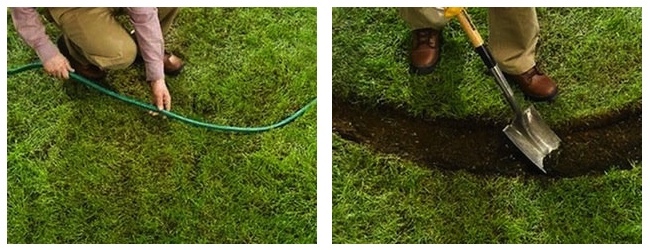
STEP 2: Dig and tamp the soil where you’ll pour the concrete.
Excavate your planned border perimeter to a 4″ depth and an 8″ width. Compact the soil to create a solid base for the concrete you will add in a later step.
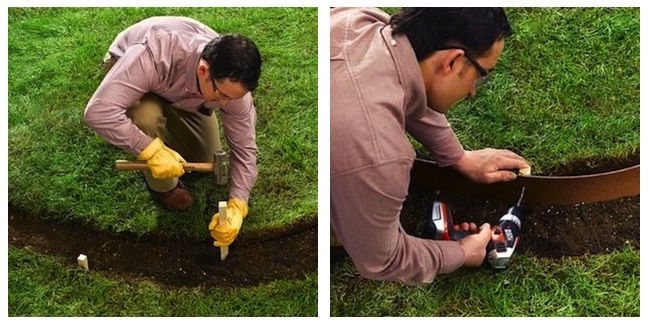
STEP 3: Stake outside the border.
Drive 1″ x 1″ x 12″ wood stakes at one-and-a-half-foot intervals along the border.
STEP 4: Create your concrete mold.
With 1″ wood screws, attach 1/4″ x 4″ x 8″ pieces of flexible hardboard (for curved borders) or rigid plywood (for angular installations) to the wood stakes.

STEP 5: Insert spacers to keep the edging an even width.
For spacers, cut 1″ x 1″ boards in lengths equal to the width of the border. Meanwhile, set 1″ x 1″ x 12″ wood stakes along the outside of the border in three-foot intervals, then set your spacers as needed along the bottom of the excavated area to maintain a consistent garden border width.
STEP 6: Mix and pour your concrete.
Having mixed the concrete to a firm, workable consistency, pour it into the border form, using a margin trowel to spread and consolidate the mix.
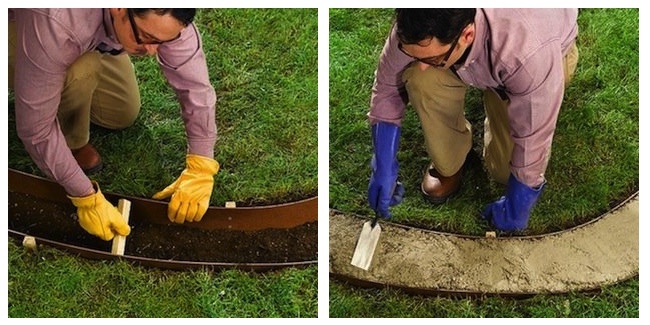
STEP 7: Smooth the concrete and cut control joints.
Wait for the bleed water to disappear, after which time you can smooth the surface with a wood float. Then, using the margin trowel, cut control joints at three-foot intervals, each one at least 1″ deep into the concrete. Consolidate and smooth the border edges using a concrete edging tool.
STEP 8: Coat with an acrylic concrete sealer.
Finally, apply acrylic concrete sealer to the concrete before letting it cure for three to five days. Once the concrete has cured, remove the forms and backfill against the lawn border with dirt or sod.
For more garden edging and walkway solutions, visit QUIKRETE.
